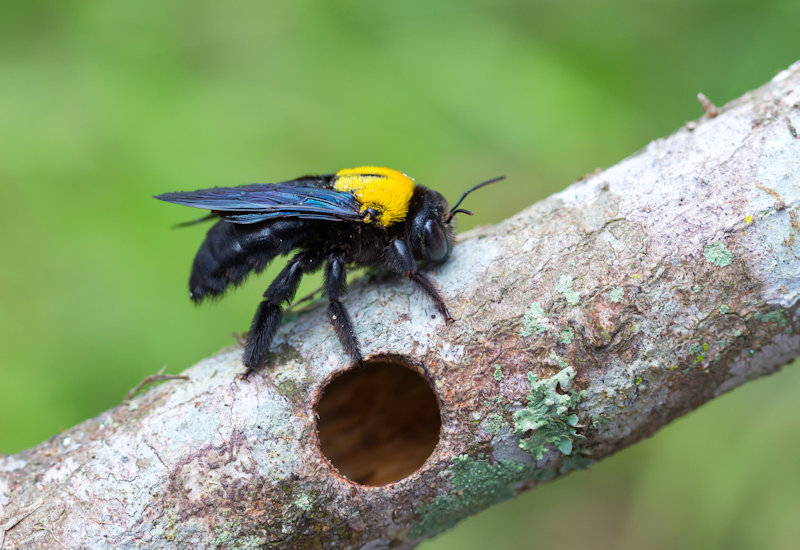Second only to bumblebee queens, carpenter bees are the largest type of bees in the U.S. They’re common in southern states as well as on the east coast, especially in Southern Maryland and Northern Virginia.
While carpenter bees rarely sting, they can cause serious structural damage to your home. If left unchecked, females will tunnel into the wood of your home to lay their larvae.
That’s why it’s important to hire a professional at the first sign. The question is, how do exterminators get rid of carpenter bees?
Read on to learn what goes into exterminating carpenter bees.
Finding the Entrance Holes
The first thing your exterminator will do is search for entrance points in and around your home. Carpenter bees are most active in the spring, and it’s best to catch them before their larvae hatch.
The entrance hole from a carpenter bee is often a half inch in diameter. There may also be a tunnel that travels perpendicular to the wood grain.
Carpenter bees prefer unpainted wood that’s dry and weather worn. Your exterminator might find damage to your doors, in windowsills, eaves, or wooden fences. Sawdust around a possible entrance point is another sign of an infestation.
Applying Insecticide
Once your exterminator finds the entrance holes and understands the scope of the infestation, they can start treatment.
Insecticide can take the form of an aerosol, a liquid, or a dust. The most effective ones usually contain ingredients like cyfluthrin, deltamethrin, bifenthrin, or lambda cyalothrin.
Your exterminator will apply the insecticide to each entrance hole. It will take a few days for the insecticide to get to the bees and larvae.
Plugging the Entrance Holes
A few days after the insecticide application, your exterminator can block up the entrance holes. This will keep carpenter bees from entering or leaving the entrance hole.
They might use a wooden dowel coated with wood glue, wood putty, caulk, or even steel wool to block the hole.
Covering the holes keeps other carpenter bees from drilling into the same area. It also protects the wood from moisture damage and rot.
Preventing Future Damage By Carpenter Bees
To keep carpenter bees from coming back, your exterminator might spray vulnerable areas with insecticide. But, this may only last for a few weeks.
Since bees prefer untreated wood, coating the area with paint, stain, or polyurethane can also keep them at bay.
To keep the bees away from your home, you can also put untreated wood posts in your garden. This will give them a place to tunnel so you can protect your home. They’ll also help pollinate your flowers.
So, How Do Exterminators Get Rid of Carpenter Bees? See For Yourself!
Carpenter bees can cause damage to the wood in your home. That can lead to wood rot and other expensive structural issues.
But, getting rid of carpenter bees can be time consuming. If you’re still wondering, how do exterminators get rid of carpenter bees, call a professional so you can see the process in action.
If you’re located in Northern Virginia or Southern Maryland, we can help you solve your pest problem. We offer planet-friendly pest control to give you peace of mind. Contact us to learn more about our services.
NEED HELP?
If you live in Southern Maryland, or Northern Virginia
FIND YOUR SOLUTION HERE
People, Pet & Pollinator Safe! Pest control for people who care.

